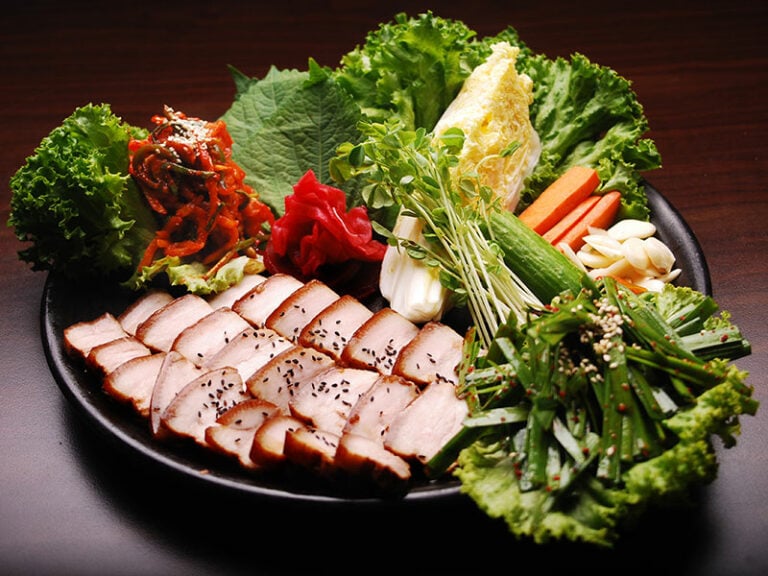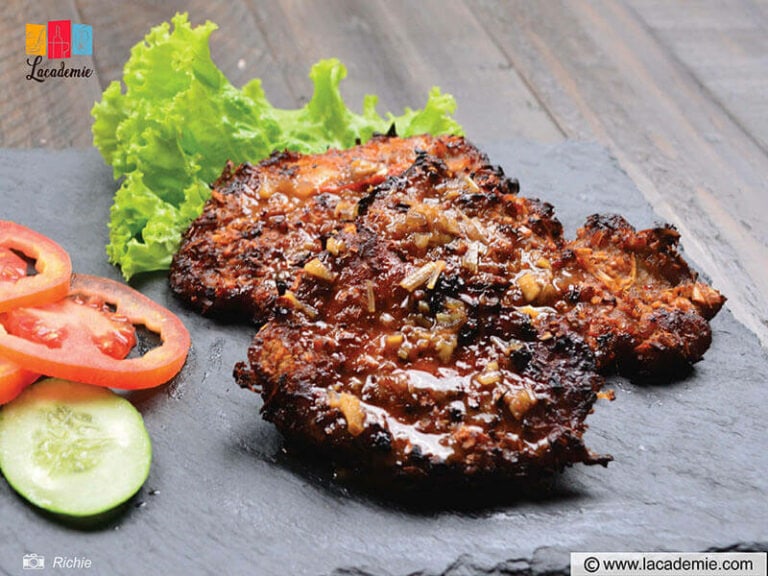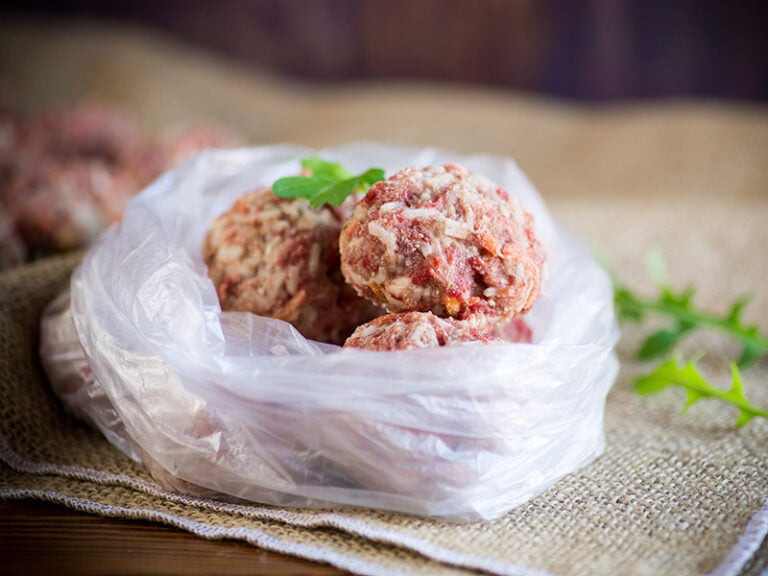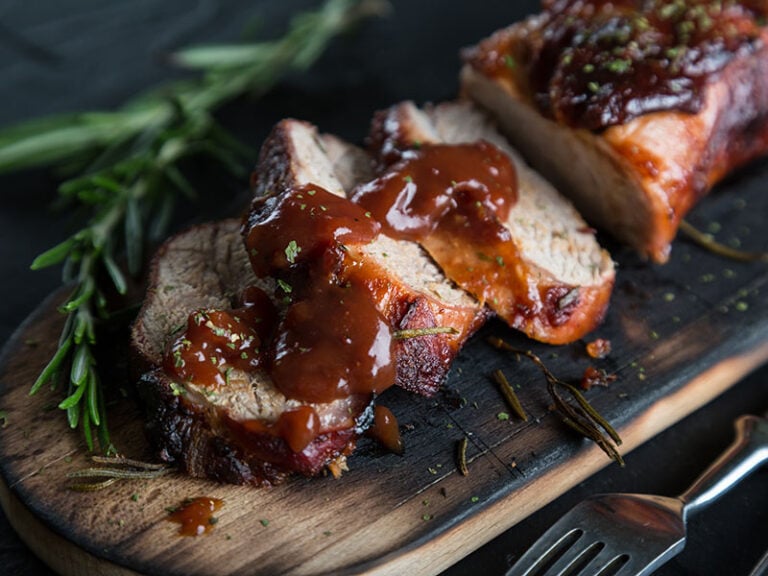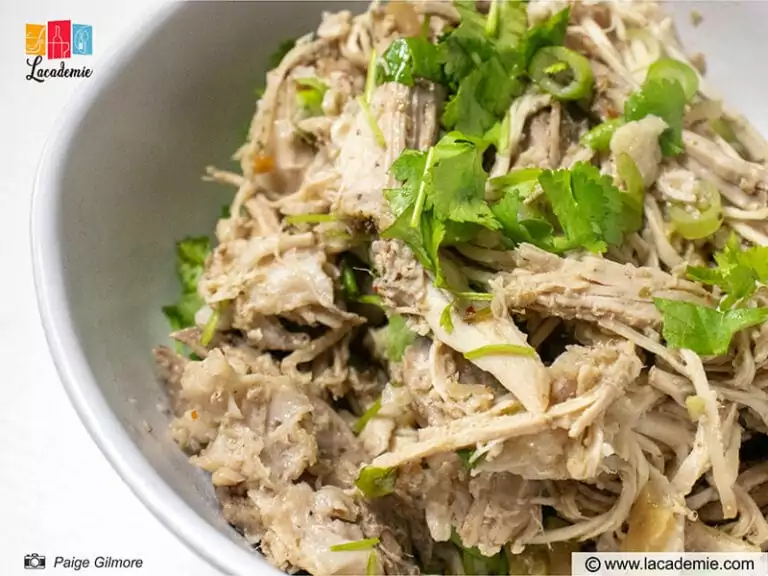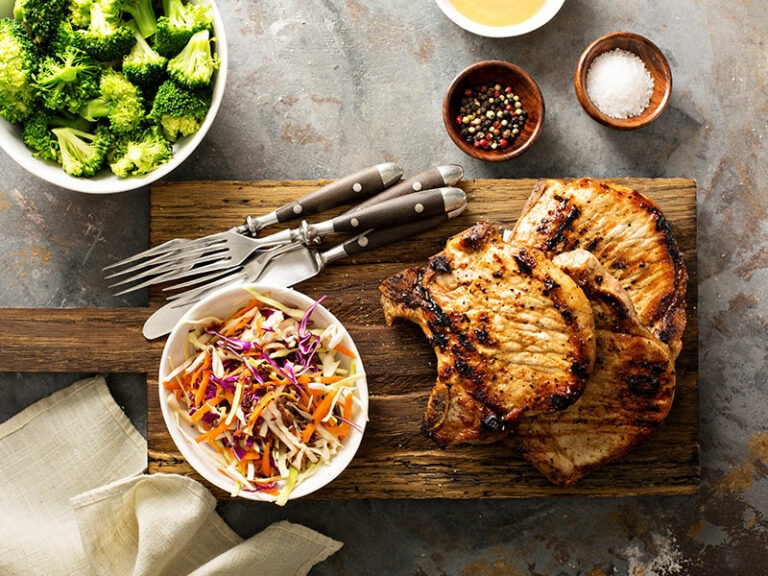How to tell if pork chops are done is one of the biggest problems many people have to face when cooking these delectable foods. Undercooking them certainly isn’t an option, but it’s almost too easy to overcook them, given how lean they are.
Luckily, there are many ways to tell when your pork chops are ready, and the best part is, they are incredibly easy. In this article, I will help you make the most tender and delicious pork chops with ways to tell when they are done, as well as tips and tricks to make a good meal.

Know When Your Pork Chops Are Done With 2 Simple Ways
The doneness of pork chops relies on many different factors, including firmness, colors, and internal temperature. There are two basic ways to check for them:
- Method 1 (Without Meat Thermometer): Press your tongs into the center of the meat to check, if it is firm but not hard, it is done. If it is still soft, it needs more time and if the pork chop is hard that means it is overcooked.
- Method 2 (Using Meat Thermometer): Stick a wireless meat thermometer with high accuracy into the thickest part of the meat. If it reaches anywhere between 145F – 160F, that means it is ready.
What Are Pork Chops?
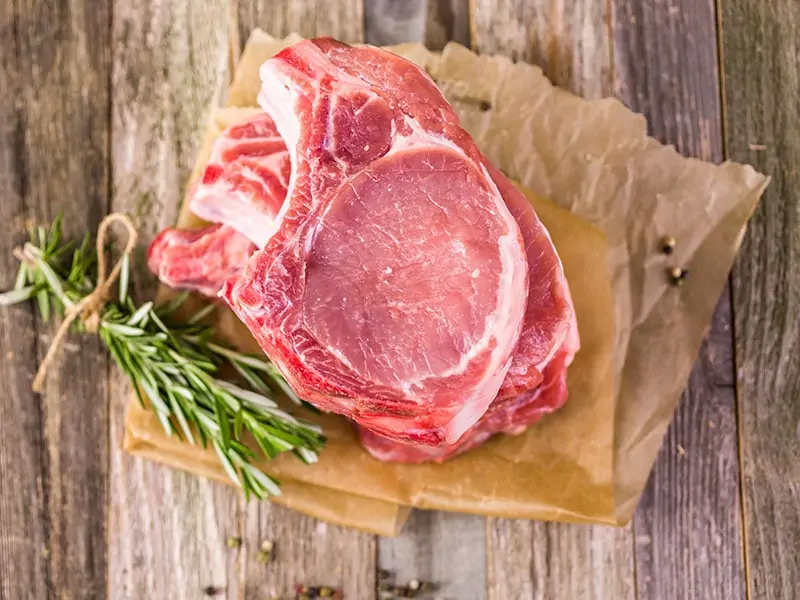
Pork chops are a loin cut taken from the spine of the pig, running from the hip to the shoulder and containing small tenderloin strips. There are many different types of pork chops, but the most common ones come mainly from the ribs and the loin (1).
Pork chops are popular because of their flexibility in cooking. You can make a quick, mild-tasting meal or prepare an entire flavorful course by pairing the pork chop with compatible side dishes. Widely used cooking methods include roasting, grilling, frying, and stuffing with other foods
Those with a hectic schedule can cook pork chop in air fryers to reduce waiting time. Also, preparing meals with air fryers allows you to cut down the volume of needed, thus giving you healthier yet equally tasty pork chops.
Popular Types Of Pork Chops
Pork chops have many different types; some are lean and tender, others chewy and tough. Find out what they are and which one fits your preference most.
1. The Blade Chop
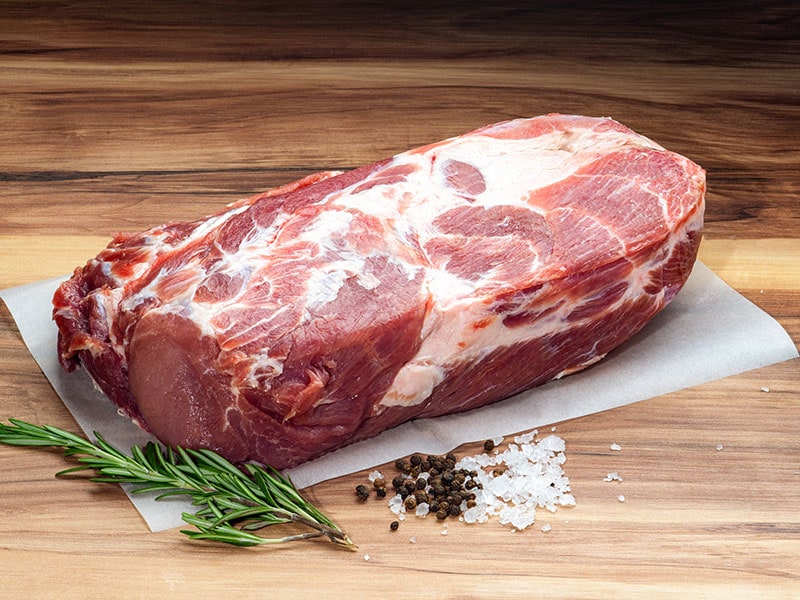
Also known as the shoulder chop, this part tends to be darker in colors, has lots of fats and a few blade bones. It can be quite flavorful but also chewy because of all the gristles and bones. The best way to cook this part is to slow-cook after braising to be tender.
2. The Rib Chop
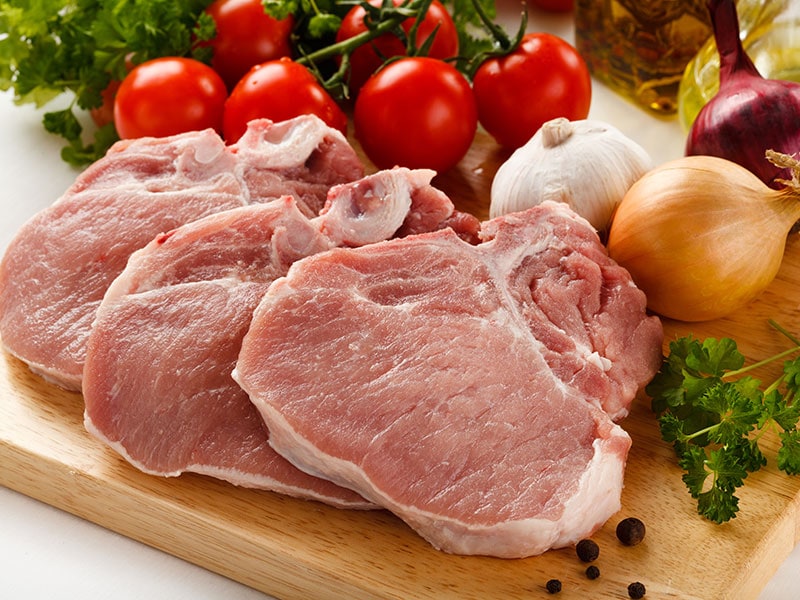
This part comes from the rib section of the loin. It usually has a bone on one side and a layer of fat on the outside. It is very tender and lean with a relatively mild flavor. This part is ideal for quick-cooking methods like grilling, broiling, or sear-roasting.
3. The Loin Chop
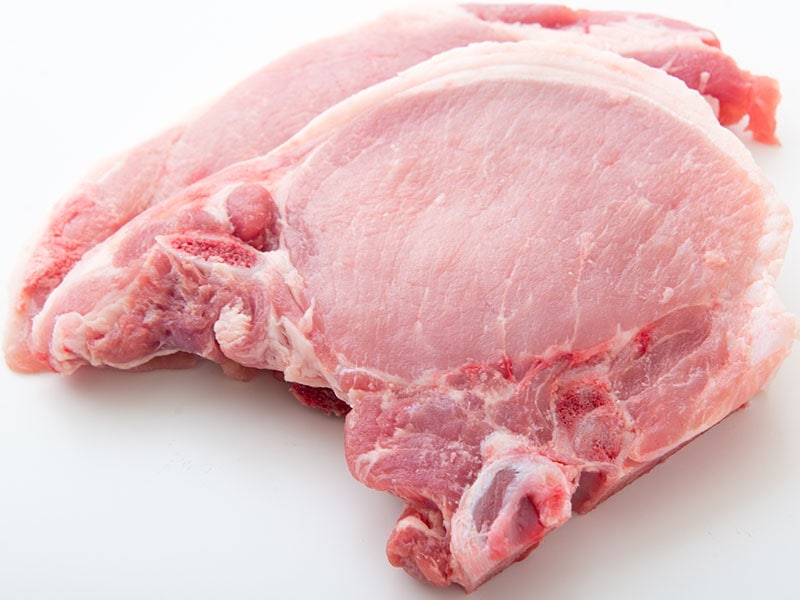
This part lies toward the back of the pig, mainly the hip. It may have some pieces of tenderloin depending on the cut. The flavor is described as very mild. This part should be cooked quickly with methods like grilling or broiling.
4. The Boneless Chop
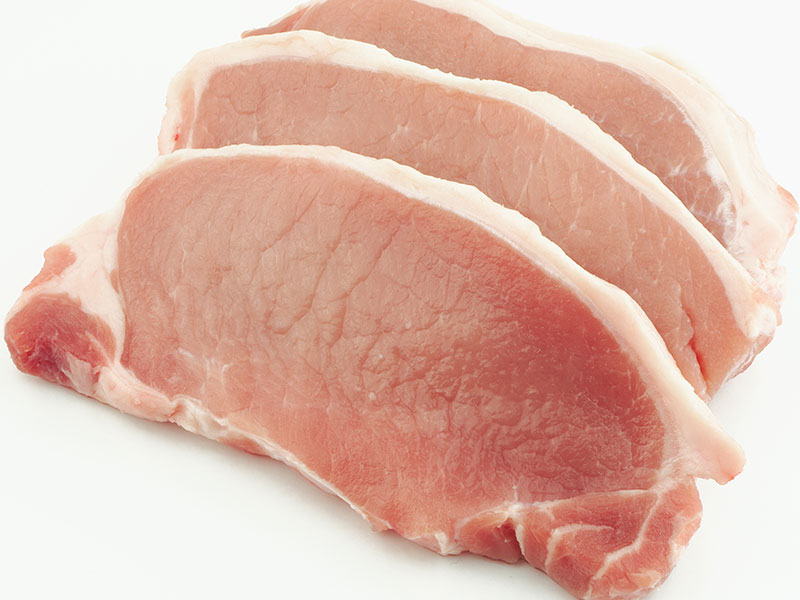
Also known as the New York chop, this part is distinguishable by how it is always boneless. This cut is above the loin chop and does not have connective tissues. It is often less flavorful than other parts but can still be cooked the same way with little fear of overcooking.
5. The Sirloin Chop
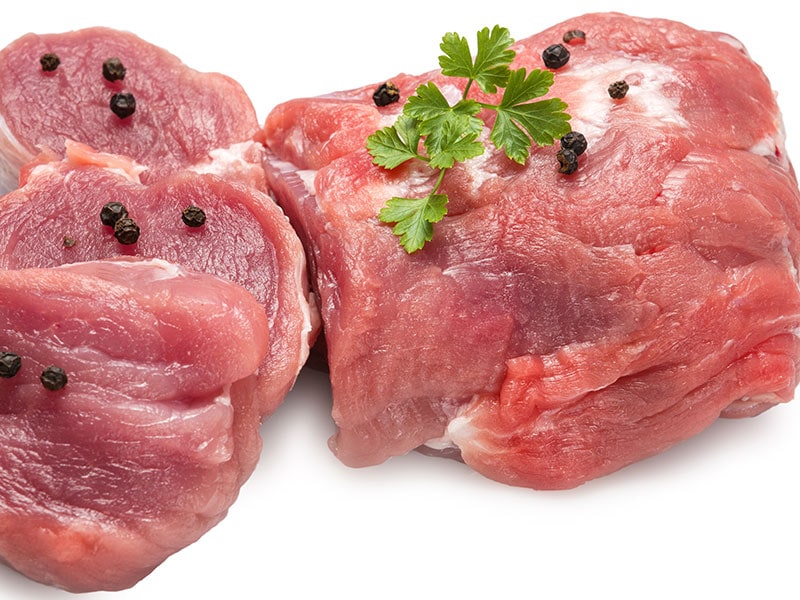
This is a cheaper cut of pork from the hip area near the back. It contains a lot of bones and tough muscles. Because of the various muscle parts, it can take a bit of effort to prepare, mostly slow-cooking like braising or stewing to get the tender and delicious end result.
Visuals and quick summaries of different types of pork chops for those who need to know the basics. You can see this video to know more:
How To Tell If Pork Chops Are Done?
Taking your pork chops out just as they are done can help make them significantly more juicy and delicious. And have you ever wondered if medium rare pork is edible? These simple guides are here to give you all the information you need.
Recommended Cooking Temperature
There are various suitable cooking temperatures for pork chops. You can bake pork chops at 350 for the appropriate duration to ensure a perfectly cooked meal. Additionally, people also bake this cut at 375, 400, and 450.
According to the USDA, the internal temperature for cooking pork is 145F. Whatever your cooking method may be, this is the safe minimum temperature for fresh pork. At this point, your pork may be slightly pink, but there’s nothing wrong with that (2).
Things You Will Need
- High quality heat-resistant kitchen tongs to test the meat’s firmness
- Spatula
- Instant read meat thermometer
Method 1: How To Tell If Pork Chops Are Done Without A Thermometer? Testing The Firmness Of The Meat
This method only takes a little bit of time. However, it is more recommended if you are experienced in cooking pork chops and meat in general.
Step 1: Use The Tongs Or Spatula To Feel The Firmness
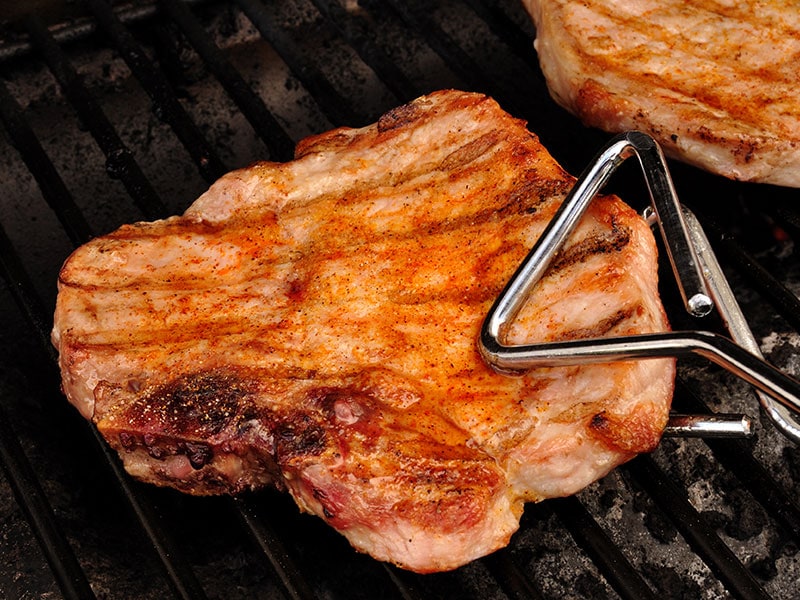
Check the firmness of the pork chops when you are cooking using tongs or a spatula. If they are soft, they are still raw in the middle. If they are firm, that means they are well done. Don’t let them get too solid, or you will overcook and dry them out.
Step 2: Remove The Pork Chops Once They’ve Turned Golden Brown
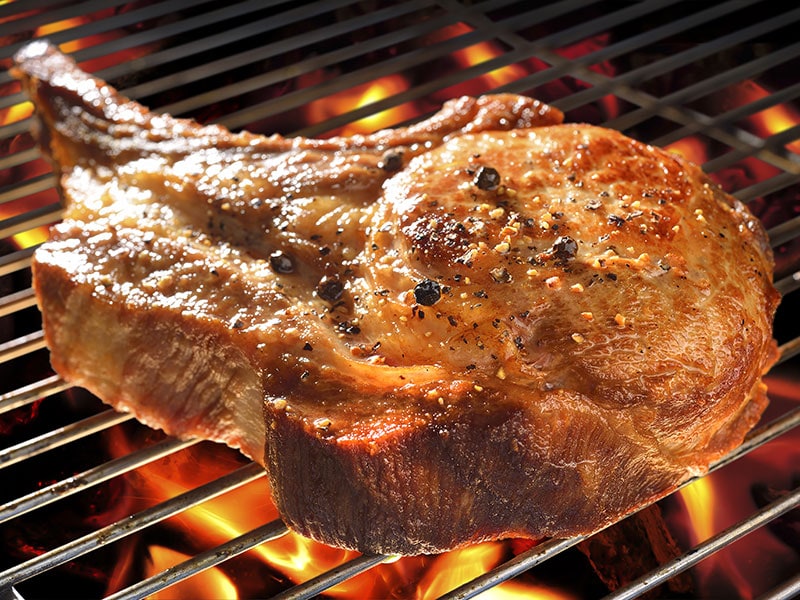
After both sides of the pork chops have turned golden brown, you can remove them from the heat. Don’t forget to use oven mitts if you use the broiler to cook your pork chops.
The oven usually cooks pork chops for about 30 minutes at 375F. If you use a frying pan, it could take from 3-5 minutes on each side. As for grilling, depending on the thickness, it could take from 5 – 15 minutes with a temperature between 350F and 450F.
Step 3: Let The Pork Chops Rest For 5 – 15 Minutes
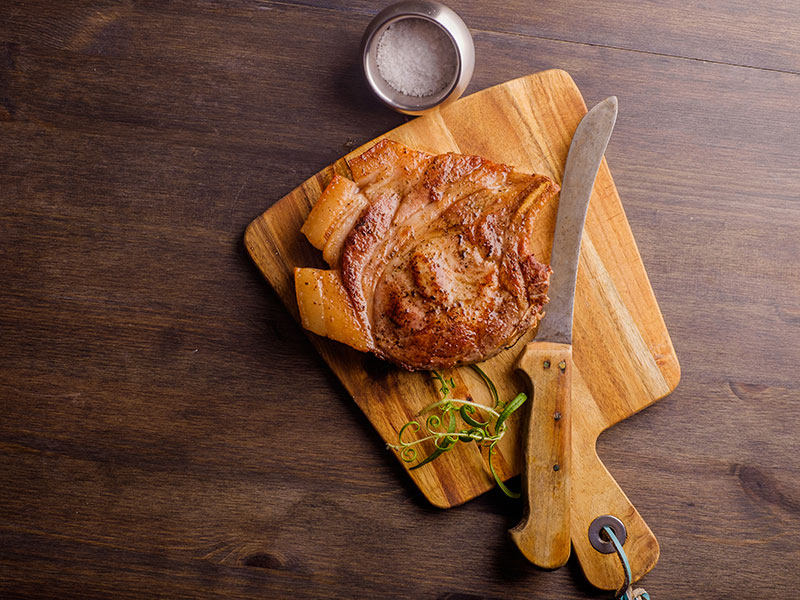
Give your pork chops some time to rest so the meat’s fibers can relax. This will make the meat more tender and juicier. You can also make a small tin foil tent to cover them and retain the heat as they rest.
Step 4: Cut Into The Thickest Part To Check For The Color
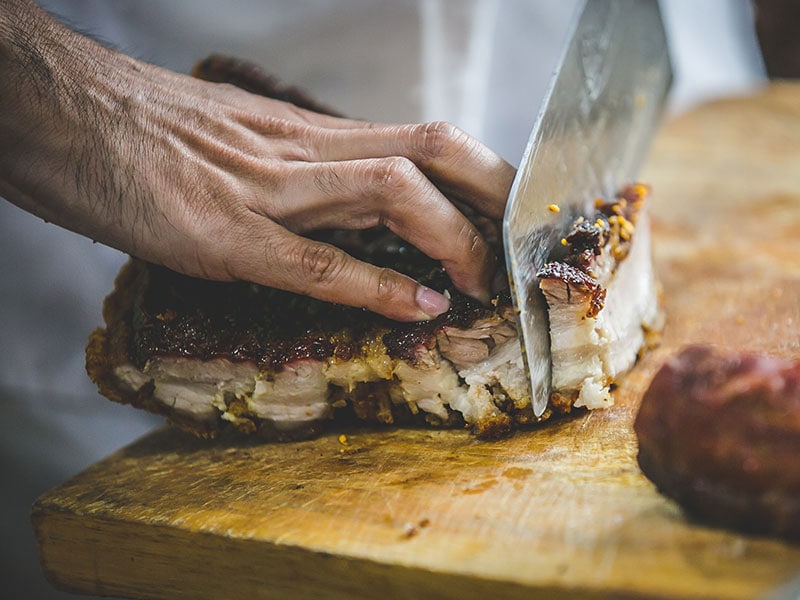
Once the meat has had time to settle, cut into the thickest part and look at the color. Properly done meat is usually opaque and has a slight pink tint in the middle. The juice that flows out must also be clear.
If your pork chops meat these requirements, it means they’re good to go. You can serve these foods with red beans and rice, vegetable fried rice, arugula salad, or any other combination that you love.
Bonus Tips For Newbies: Check The Firmness With The Finger Test
A quick way to know what the meat firmness feels like is by comparing it to your own hand. Relax your hands and open your palm.
- Use the index finger on your right hand to feel the part below your thumb on your left hand. It should feel soft and meaty, like raw meat.
- For cooked meat, still keeping your index finger on the same part, press the tip of your left thumb on the tips of your other fingers.
- The level of doneness increases with each finger. The index finger is Rare, the middle finger is Medium Rare, the ring finger is Medium Well, and pinky is Well Done.
Method 2: Checking For Internal Temperature With A Meat Thermometer
Using a meat thermometer is the most accurate way to check for doneness in pork chops.
Step 1: Remove A Pork Chop From The Pan, Oven, Or Grill
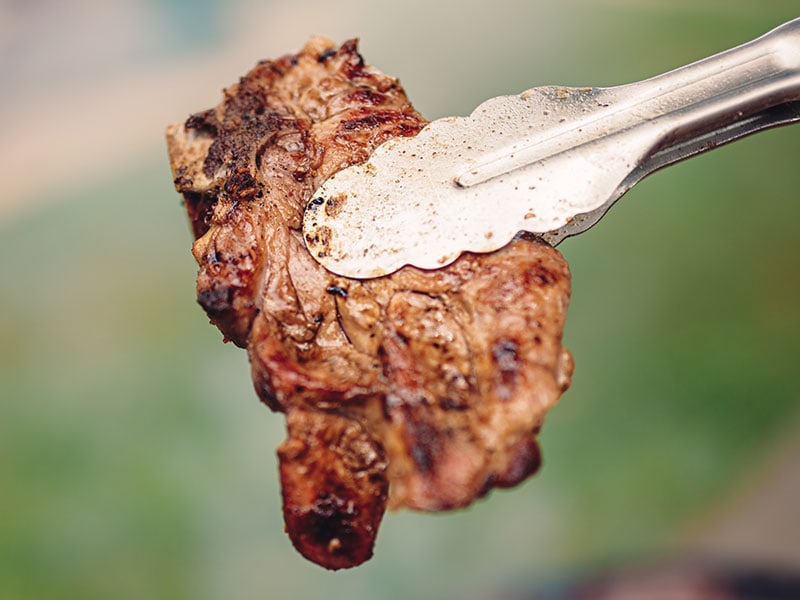
Use tongs or a spatula to take a pork chop out and check the temperature. You should do this when the meat starts to become firm and turn golden-brown.
Step 2: Put The Meat Thermometer In The Thickest Part Of The Meat
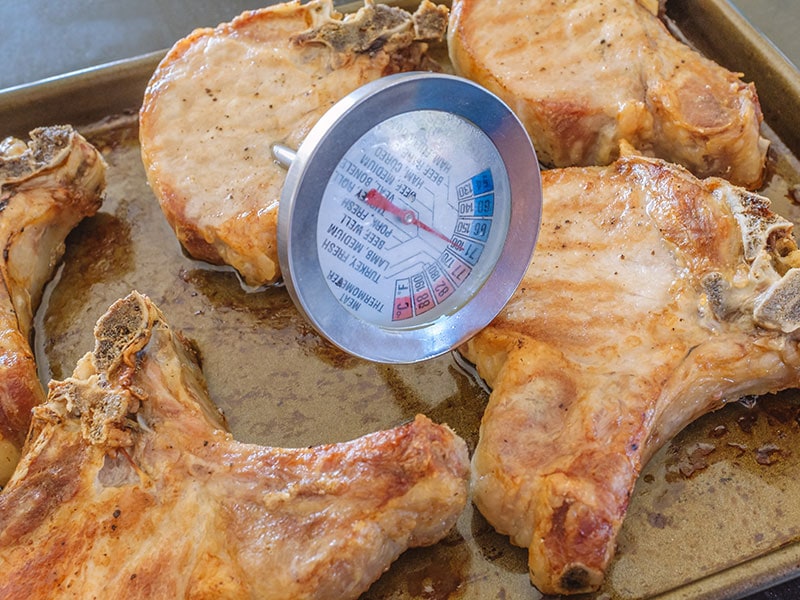
Stick the thermometer into the thickest part of the meat for the most accurate result. Remember to avoid the bones if there are any. It should only take a few seconds for the thermometer to get a reading.
Step 3: Check The Temperature Of The Pork Chop
The lowest temperature it should be at is 145F if you want a Medium Rare cook. 150F-155F is Medium, 155F-160F is Medium Well, and 160F is Well Done. Don’t let it get past 160F or you will risk overcooking it.
What Colors Are Cooked Pork Chops?
Generally speaking, color alone is not a reliable indicator of doneness for pork chops. This is because it can be affected by two factors, pH level, and cooking heat. When checking for the doneness of your pork chops, combine it with the temperature for the most accurate results.
Internal Colors Of Cooked Pork Chops (3)
*PSE: Pale, soft, and exudative pork chops
**DFD: Dark, firm, and dry pork chops
This means that the answer to the common question of whether or not pink pork is safe to eat is yes, it is safe. As for the outside color, cooked pork chops mostly turn golden brown when they are cooked in a skillet or an oven.
Although you can estimate the cooking time needed, relying on visual cues and thermometer’s readings is better. That’s why, for instance, although there’s a recommended time length to bake pork ribs in ovens at 350F, you still need to use a thermometer to check the meat’s internal temperature.
Learn all the flavorful details about what pork tastes like at different temperatures.
Simple Ways To Make Your Pork Chops Better
Cooking is all about the details. Perfect the taste and texture of your pork chops by making these small adjustments in the way you make them.
Make Thick Cuts
The thicker the cut the better. Making your pork chop cuts thick can help you prevent overcooking and drying the meat out. You can also buy double-cut pork chops, which are cut twice as thick as regular ones.
Brine Before You Cook
Make sure to brine your pork chops before cooking so the meat can stay moist, which will make it a lot more juicy and tender in the end.
Season Your Meat
Marinating your meat in seasoning can largely affect the way that your pork chops will taste. Pork alone tastes quite mild so be sure to add spices like pepper, paprika, garlic powder, sugar, etc. to give it an extra kick.
Don’t Cook Cold Meat
Cold meat can be unevenly cooked very easily, overcooked on the outside while the inside is still raw. Always let your meat sit at room temperature for 15 minutes after taking it out of the fridge.
Choose Bone-In Chops
The bone can help protect your meat from overcooking. It also has some fat around it so your meat will be a lot more tender and juicy.
Let Your Meat Rest After Cooking
When you’re done, don’t dive in right away. Leave your meat out for about 5 minutes, depending on how thick it is, so the juice has time to resettle into the fiber.
Should you have some leftover pork chops after the meal, don’t throw them away. There are plenty of recipes with leftover pork chops that you can try out to use up your uneaten food.
A thorough and in-depth tutorial on how to cook pork chops.
FAQs
Do you still have questions regarding cooking pork chops and their doneness? Take a look to see if your questions are included here.
Bonus Tips To Complete Your Pork Chop Dishes
The beef equivalent of pork chops are beef steaks. They are quite similar both in pricing and in cuts. If you have beef steaks recipes that you want to try with pork chops, go right ahead.
Aside from the regular seasonings, you can also drizzle honey, mustard, soy sauce, or olive oil over your pork chops to make them juicier while also adding some extra flavors.
Butter is your friend when it comes to cooking pork chops. Whether you are grilling it on a pan or reheating it several days later, brushing some butter on top of your pork chops will give you all the juiciness you want.
This article has covered all the essential information that you might need to check for your pork chops’ doneness. Try it out next time you cook and see how it works. If you found this article helpful, please share it with your friends. See you next time!
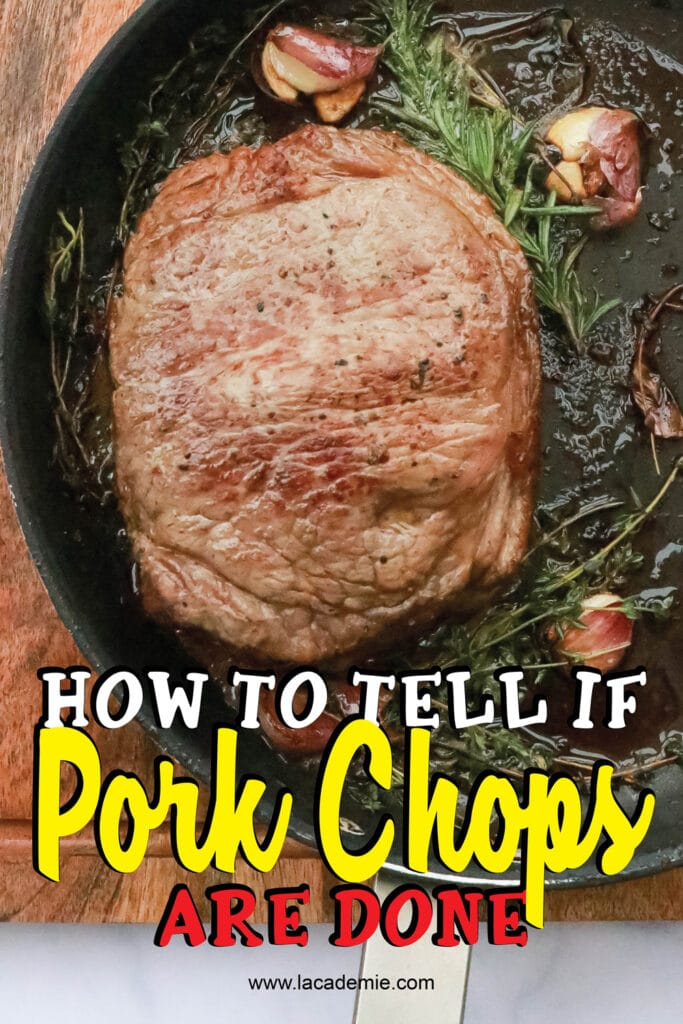
References
- wikipedia.org. 2021. Pork chop – Wikipedia.
- S. DEPARTMENT OF AGRICULTURE. 2020. Safe Minimum Internal Temperature Chart.
- Board, N., 2006. Cooked Color in Pork – Pork Information Gateway.

